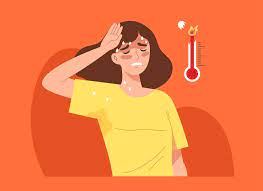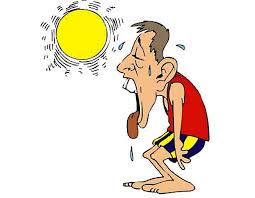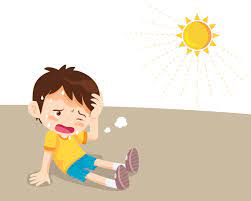Contents
Introduction:
Hey there, fellow sun seekers! As we dive headfirst into the sizzling embrace of summer, it’s important to be aware of the lurking danger that comes with the scorching heat: heat stroke. Imagine this: you’re out enjoying a beautiful summer day, but suddenly you start feeling dizzy, and nauseous, and your skin feels like it’s on fire.
This, my friends, could be the onset of heat stroke, a serious condition that occurs when your body overheats due to prolonged exposure to high temperatures. But fear not! In this guide, we’ll delve into what heat stroke is, its signs and symptoms, and most importantly, how you can stay cool and safe under the blazing sun. So grab a cool drink, find some shade, and let’s explore the ins and outs of heat stroke together.
Understanding Heat Stroke:
Signs and Symptoms:
Spotting the signs of heat stroke early on is key. Keep an eye out for symptoms like:
- Dizziness or lightheadedness
- Rapid heartbeat
- Nausea or vomiting
- Throbbing headache
- Hot, dry skin
- Confusion or disorientation
If you or someone around you starts experiencing these symptoms, it’s time to take action!
Tips to Avoid Heat Stroke:
Now, let’s dive into some actionable tips to keep heat stroke at bay:
1. Stay Hydrated
This one’s a no-brainer. Drink plenty of water throughout the day, especially if you’re out and about in the sun. Hydration is key to regulating your body temperature and preventing heat-related illnesses.
2. Dress Appropriately:
Opt for lightweight, loose-fitting clothing made from breathable fabrics like cotton. This allows sweat to evaporate and helps cool your body down naturally.
3. Seek Shade:
When outdoors, try to seek shade whenever possible. Whether it’s under a tree or an umbrella, staying out of direct sunlight can significantly reduce your risk of overheating.
4. Take Breaks:
If you’re engaging in physical activity or spending time in the sun, be sure to take regular breaks in a cool, shaded area. This gives your body a chance to rest and recover.
5. Use Cooling Products:
Consider using cooling towels, fans, or misting sprays to help lower your body temperature. These handy gadgets can provide instant relief on hot days.
6. Limit Outdoor Activities:
During the hottest part of the day, typically between 10 a.m. and 4 p.m., try to limit your time outdoors. Instead, plan activities for the early morning or evening when it’s cooler.
7. Know Your Limits:
Listen to your body! If you start feeling too hot or fatigued, it’s important to take a step back and cool off. Pushing yourself beyond your limits can lead to heat-related illnesses.

8. Check on Vulnerable Individuals:
Keep an eye on children, elderly individuals, and pets during hot weather. They’re more susceptible to heat stroke and may need extra attention to stay cool and hydrated.
9. Final Thoughts:
So there you have it, folks! By following these simple tips, you can stay cool and safe during the hottest days of summer. Remember, prevention is key when it comes to avoiding heat stroke. Stay hydrated, seek shade, and listen to your body’s cues. With a little mindfulness and preparation, you can enjoy the sunshine without putting your health at risk. Stay cool out there!
Conclusion:
Heat stroke is a serious condition that can pose significant risks, especially during the hot summer months. However, armed with the knowledge of its signs and symptoms, along with practical tips to stay cool and hydrated, we can all take proactive steps to prevent it. By staying hydrated, seeking shade, dressing appropriately, and knowing our limits, we can enjoy the sunshine safely. Remember, your health is invaluable, so prioritize it by taking care of yourself and those around you during hot weather. Stay cool, stay safe, and embrace the summer while keeping heat stroke at bay.





[…] food and water, leading to systemic manifestations such as sustained fever, abdominal discomfort, headache, and generalized weakness. Without timely intervention, typhoid fever can progress to severe […]